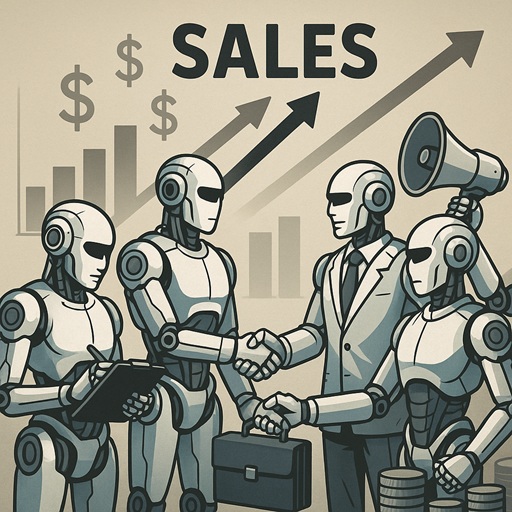The first time I recall going into a restaurant with no human interaction I was taken aback. I know they had self-checkout machines, but this was the first time I was forced to try it.
I was at a McDonald’s in Chicago late at night. I had just arrived and was looking for something quick to eat. I saw the gold arches and thought why not, it’s not ideal, but the time of day didn’t make it easy to get something better. I walked in thinking I was going to order some fries and drink and be on my way quickly. Little did I know this would start my journey into the world of machine automation.
As I stood there looking around for a person to order with, it was oddly lonesome and empty. Just machines with menus on them. I slowly approached the interface and began scrolling through to find something I liked. It took a few minutes to get used to it. I began selecting items and eventually settled on a cart. Then I had to pay for the items myself and collect a ticket to pick up the food. From there I looked around to see where my food would be coming from, but I didn’t easily notice anything. I watched others walk around the corner to another empty counter where food was coming out and numbers were being called. I waited for my turn and eventually got my food.

The entire experience didn’t have any human interaction. It took me a little longer to order and get my stuff but in the end, I accomplished my goal. Despite the fact that I was eating McDonald’s late at night.
What I learned from this experience was that automation and machines are not going away. More places today are either self or app order enabled to cut down on the need for human interference and mistakes. The user is left to their own devices and master the process themselves.
These tasks can be automated because they are standardized and have a select number of options that users can make. What makes this even more wild is as these features and aspects become more commonplace for users, as well as cost effective for business, the need for machines and automation is only going to grow and the lack of human interaction decreases.
Industrial Automation Types
There are 4 main types of automation when it comes to industry production. Let’s focus and explore each aspect to fully understand their traits.
- Fixed Automation
- Programmable Automation
- Flexible Automation
- Integrated Automation

Fixed Automation
Fixed automation is an enduring pillar of industrial innovation, representing the deployment of specialized equipment to execute specific tasks repetitively, efficiently, and without the need for human intervention. Despite its inflexibility in programming, fixed automation's strength lies in its ability to perform at high speeds, making it indispensable for mass production scenarios like assembly lines.
In such settings, like automotive manufacturing, the process is compartmentalized into stages where each specialized machine executes its designated function, such as welding or painting, as the product progresses through the line. This steadfast system remains an exemplar of simplicity and consistency, driving industries that thrive on repetitive tasks, while flexible automation systems, by contrast, serve environments where product movement, like in food factories, demands adaptation within the production line.
Programmable Automation
Programmable automation offers a sophisticated and versatile alternative to fixed automation, characterized by its adaptability to perform a diverse array of tasks through programmable technology. This capability empowers factories to produce a varied range of products by altering the sequence of operations and machines involved, making it ideal for industries requiring different tasks from one batch to the next.
Central to programmable automation are Programmable Logic Controllers (PLCs), which facilitate the programming and control of automated processes, enabling machines to respond to production environment changes efficiently. This system is tailored for industries demanding moderate customization within their production processes, especially suited for low-volume, high-variety production tasks. Its flexibility is exemplified by CNC machines that can be reprogrammed to produce distinct parts through software modifications, as well as programmable industrial robots and control systems, granting organizations the agility to swiftly transition between products or adjust processes in response to shifting demands.
Flexible Automation
Flexible automation represents the zenith of complexity in industrial automation, offering unmatched customization and adaptability by enabling machines to not only perform a variety of tasks but also adjust how these tasks are executed. This advanced automation system empowers factories to diversify their product offerings and rapidly alter production lines, efficiently catering to industries with variable products. As a fusion of fixed and programmable automation strengths, flexible systems utilize cutting-edge robotic technologies to perform multiple tasks autonomously.
Unlike programmable automation, which relies primarily on software adjustments, flexible automation uses reconfigurable hardware, allowing swift adaptation to new workflows or production needs. Ideal for industries with high customization demands and frequent production changes, flexible automation encompasses technologies like collaborative robots, autonomous mobile robots, and adaptive assembly lines. Notably, flexible automation is making significant advancements in self-driving technologies, as demonstrated by Cyngn’s autonomous stockchasers equipped with DriveMod, which can seamlessly adapt to dynamic workflow requirements while offering manual and autonomous operation modes. Additionally, Cyngn Insight provides comprehensive analytics for effective fleet management, enhancing workflow adaptability and making it a robust flexible automation solution.
Integrated Automation
Integrated automation stands as the pinnacle of industrial automation's complexity, enabling centralized control over all production aspects by connecting machines to a central computer. This sophisticated system is particularly beneficial in industries producing small quantities where rapid and easy modifications to the production line are necessary. It seamlessly orchestrates various processes, such as CAD, CAM, and equipment operations, through a unified interface, encompassing robots and cranes for effective scheduling and production control.
Integrated automation combines the strengths of fixed, programmable, and flexible automation to optimize production processes, creating a cohesive and comprehensive approach to manufacturing. Advanced computer software coordinates the various automated components, like robots and conveyors, performing intricate production tasks within these systems. Notable examples include computer-integrated manufacturing systems (CIM), smart factories, and cyber-physical systems, all epitomizing the unified, efficient, and intelligent nature of integrated automation.
Targeting Industrial Automation Companies
Automation in production has been going through quite a bit of advancements over the past few years with the rise of GenAI, faster processing, better Internet connectivity, and consumer demand pushing trends towards full automation. Targeting companies in the industrial automation space is productive and efficient as companies are seeing stable growth patterns and new innovations pushing investor growth.
If you are a sales person or company that is looking to find and contact Industrial Automation companies, then you’ve come to the right place. At Seamless.AI, we pride ourselves on making helpful tools that make it easy to isolate and contact specific roles within a targeted company. Our sales tools are designed to find contacts based on industry, location, role, size, or many other qualifications to filter results and help sales reps prospect efficiently.
You can learn more about our tools and features by getting a FREE account and get 50 credits to use right away. Don’t let automation pass you by. Get into the game now and start building your pipeline of high-quality industry automation leads.
















